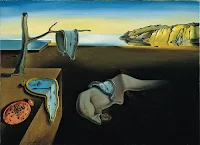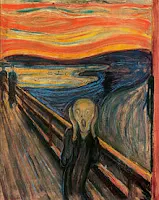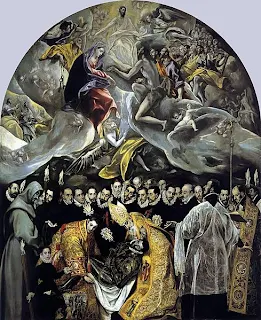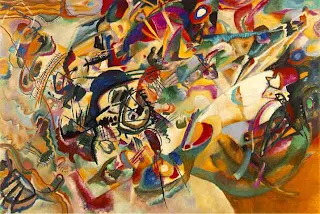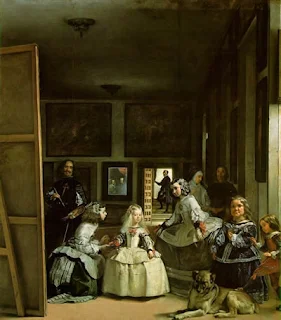Question: Why are textiles included in Missouri art curriculum in the first place?
Answer:
Textiles are included for four distinct reasons. The first
reason being that our market places are brimming over with all kinds of
materials that artists may use to express themselves with. The state art
educators want to be the first to promote the free use of any new
mediums. Secondly, if teachers are going to teach art history of a
particular study like textiles, they also then need to be able to
instruct students in the use of historical materials. New mediums help
art teachers keep up with the times, and old mediums help art teacher
reinforce art history lessons to students. The third reason that
textiles are now taught is to promote to the children of Missouri a
broader definition of "art." Art does not have to be a painting or a
sculpture only, it can also include a hand-woven rug or a meticulously
sewn quilt. Traditionally, modern artists believed that fine crafters
and fine artists must be kept apart in the world of art. But the state
now wishes to teach a greater variety of view points both on and in the
art related fields. This is because the state now recognizes that
children come in all shapes, colors and sizes. Children also come from
many different cultural backgrounds, countries and religions. So in an
effort to appeal to a greater variety of people, the state is teaching a
greater variety of topics under their fine arts curriculum. And fourth,
the state public schools are funded by the tax money of many different
people. The inclusion of textiles is one of several new mandates for art
teachers that will appeal to a larger audience who supplement our
public schools with their tax dollars.
Question: Is paper mache considered a textile?
Answer: Yes, because
it is a fiberous pulp medium that can be manipulated in a wide variety
of ways. Paper mache may also be used during a sculpture course in
general. This is because both sculpting and painting courses have
broader stipulations than textile courses when the state is defining the
materials used under particular art requirements.
Question: What mediums are used in textile education?
Answer: The
mediums in an art textile class include fabrics, weaving, and paper
that is manipulated as a flat woven surface and/or sculpture. The paper
can not simple be drawn on or painted on in order for it to be included
in an authentic textile course. There are many teachers who include
paste painting techniques in projects that they label "textiles." This
is not a textile subject technically. In textiles, the paper must be
further manipulated with techniques such as folding, shredding, or
weaving in order for the lesson to be thought of as something other than
a painting or drawing requirement. (Dyeing fabrics is, however, considered a textile technique traditionally.)
Simply painting onto the canvas is a painting technique. These methods
cross over in art courses but in order to label them properly, teachers
must adhere to particular standards. In mixed media project both textile
and painting techniques are often included. In this case, the teacher
would file her art project under "mixed media" for that particular state
standard instead of textile. If she has no other textile project, she
could used the mixed media for a textile requirement but it would be
better for her to choose the former and incorporate a weaving project
for a textile standard requirement.
Question: What is the difference between teaching textiles and teaching sewing?
Answer: In
textile art courses, teachers instruct their students to manipulate
fabric, weaving materials or even paper pulp mediums to create art.
Included in this instruction, are all the standards used by art
educators when teaching painting, sculpting etc.. In other words, if an
art teacher is designing a quilt unit, he or she will also include in
that unit the study of design theory, color theory, and the art history
of the chosen subject. If a sewing teacher is teaching a unit in quilts,
she will most likely teach basic machine sewing methods plus economic
principles. Home economics instructors and fine art teachers sometimes
share similar interests, but these two schools of practice are very
different from each other because of the information that is included in
the curriculum of each interest. This is also true of the differences
between craft teachers and fine art teachers. A craft instructor will
most frequently limit her teaching to the manipulation of materials. A
fine arts teacher covers more material and also teaches subjects in the
arts from the perspective of fine arts. All three of these teaching
professions are beneficial to the development of eye-hand coordination
in students. But the type of additional information taught with material
lessons designed to enhance small motor skills is determined by the
instructor's knowledge base.
My Textile and Sewing Pinboards:
My Textile and Sewing Pinboards:
- Kaleidoscope Quilts - Examples on the web
- Crazy Quilts - Crazy quilting as a textile art is extremely creative and free-flowing by nature, and crazy quilters will often learn as much about specific embellishments as they will about crazy quilting itself.
- Baltimore Beauties - Baltimore Album Quilts originated in Baltimore, Maryland in the 1840s. They have become one of the most popular styles of quilts and are still made today. These quilts are made up of a number of squares called blocks. Each block has been appliquéd with a different design. The designs are often floral, but many other motifs are also used, such as eagles and landmarks. They have a background of white and incorporate many primary colors such as reds, greens and blues.
- Amish Quilts - Amish quilts are appreciated for their bold graphic designs, distinctive color combinations, and exceptional stitching. Quilting became a favored activity of the Anabaptist sect after emigrating to the United States and Canada from Germany and Switzerland over 250 years ago.
- Hawaiian Quilts - Hawaiian quilting reflects distinctive design qualities found in the Hawaiian floral and fauna. The patterns are usually large and radially symmetric. Most Hawaiian applique quilts are cut from a single piece of folded fabric.
- Needlecases, Needle Books and Pincushions
Question: Where might I find lesson plans for teaching sewing to young students?
Answer: I suggest that you either purchase or check your local library for a title called, "Kids Can Quilt" by Dorothy Stapelton. In this book, you will find pattern templates, excellent directions and projects that develop basic skills and creative thinking processes that are simple enough for 4th, 5th, and 6th graders to accomplish.
Answer: I suggest that you either purchase or check your local library for a title called, "Kids Can Quilt" by Dorothy Stapelton. In this book, you will find pattern templates, excellent directions and projects that develop basic skills and creative thinking processes that are simple enough for 4th, 5th, and 6th graders to accomplish.
- Age appropriate sewing lessons
- What should be included inside a young person's first sewing kit?
- Examples of sewing boxes and kits
Question: I want to teach my second graders how to weave but
their finger skills are not yet "advanced" enough to weave with
cardboard looms. They have already practiced with paper weaving. Do you
have any suggestions?
Answer: Yes, teach them how to weave with a cardboard box loom. I have pictured my teacher sample below. This kind of weaving is just slightly more advanced than paper weaving and very age appropriate for second graders. Ask parents to donate shoe box lids only for this art endeavor. You will need to string the looms in advance though.
Answer: Yes, teach them how to weave with a cardboard box loom. I have pictured my teacher sample below. This kind of weaving is just slightly more advanced than paper weaving and very age appropriate for second graders. Ask parents to donate shoe box lids only for this art endeavor. You will need to string the looms in advance though.
- Textile and Sewing Graphics to Illustrate Your Worksheets and Newsletter With
- Textile Lesson Plans Online
- Weaving Methods and Projects for Elementary Students












